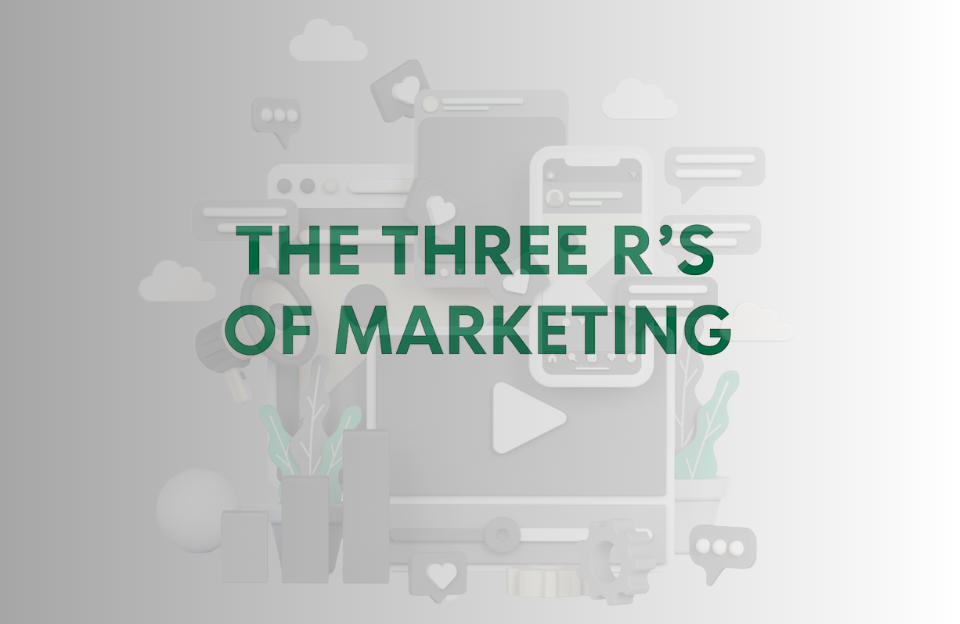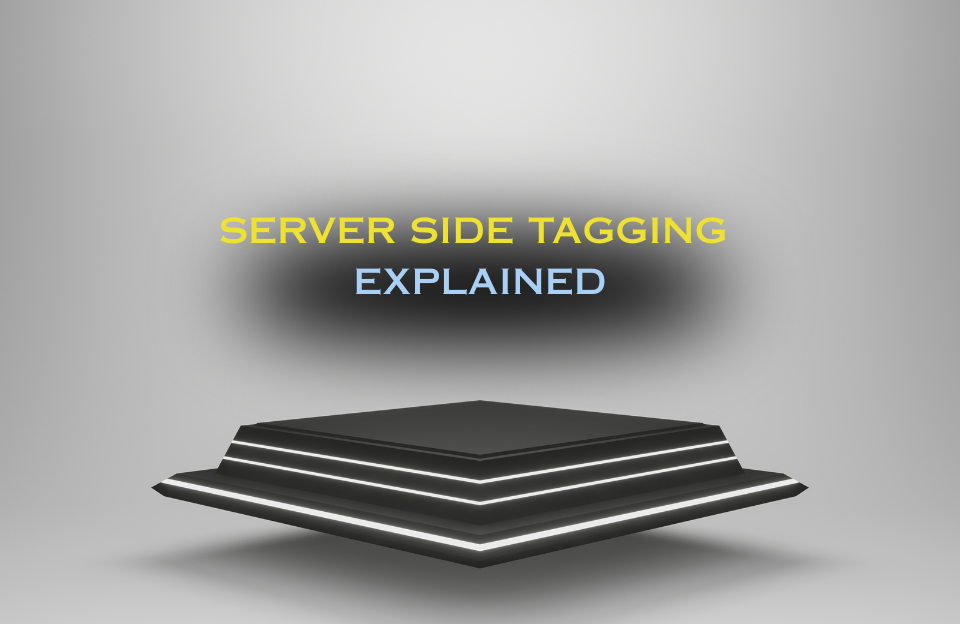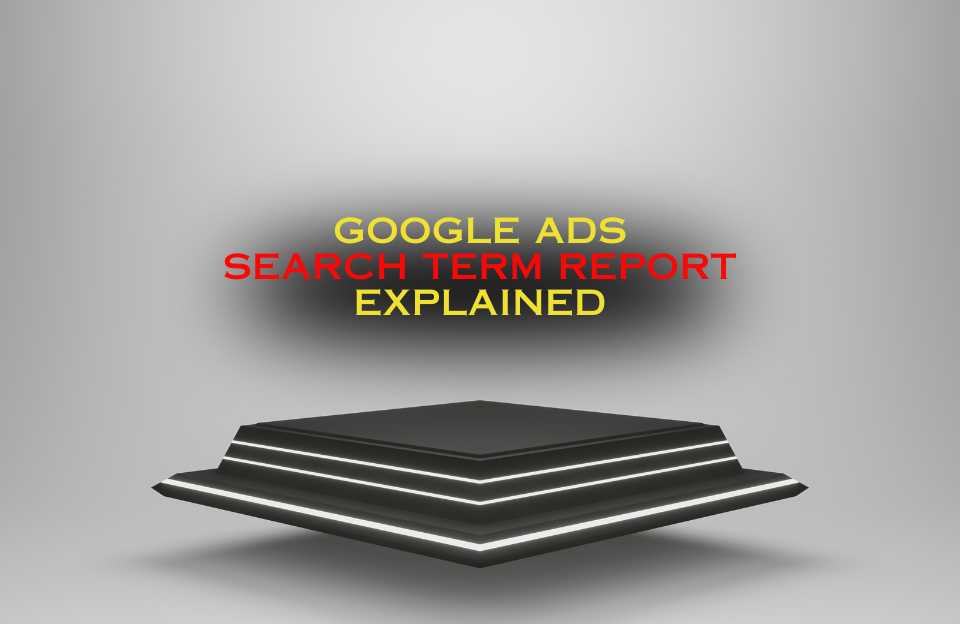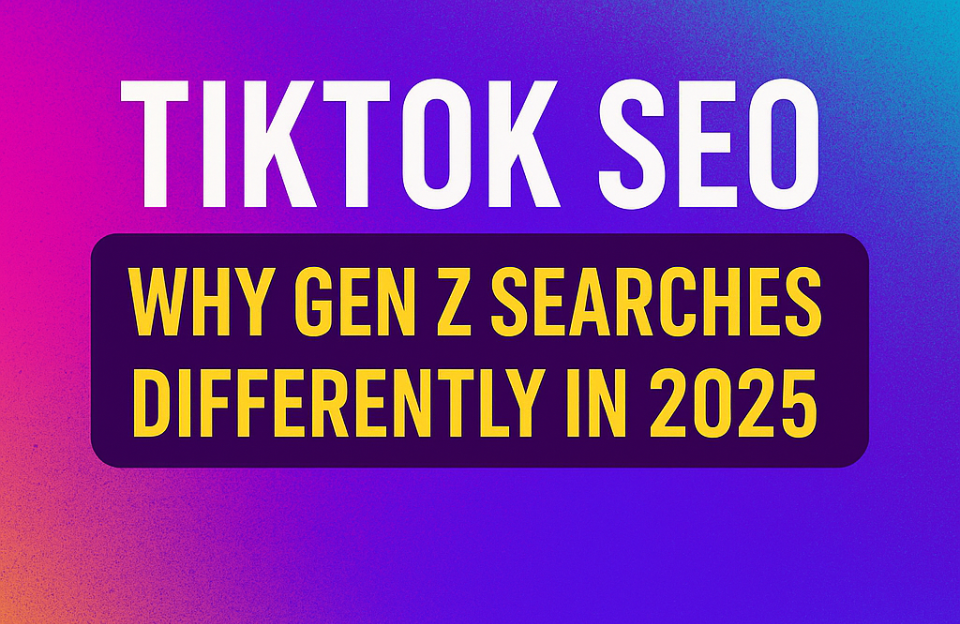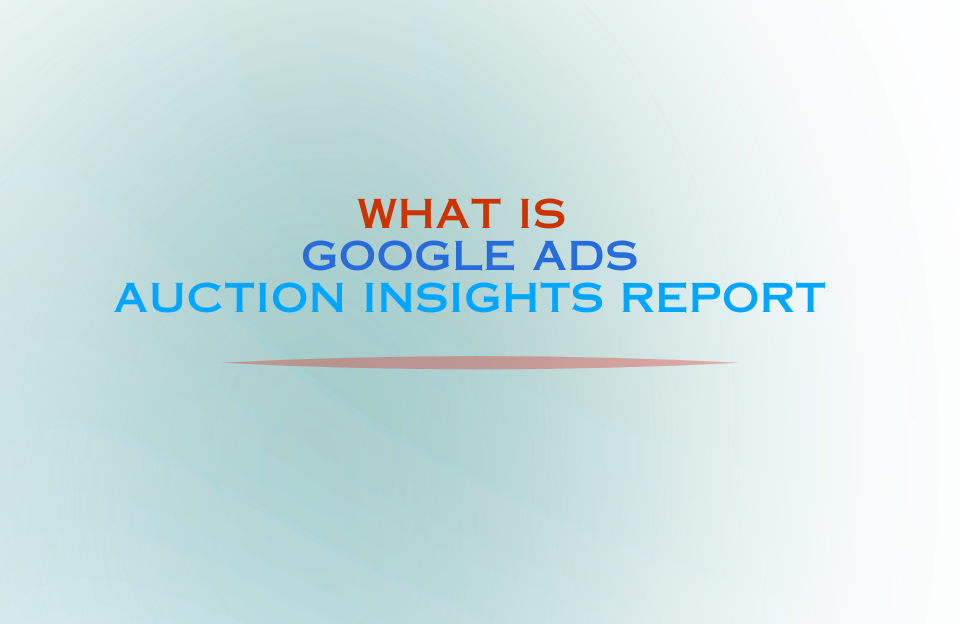Summary: The Three R’s of Marketing—Reach, Relevance and Relationship—is a practical framework to grow brands sustainably. Reach finds new audiences, Relevance turns attention into action, and Relationship compounds value over time through retention and advocacy. This guide explains the model, metrics, examples and FAQs in one place.
The Three R’s of Marketing: Reach, Relevance & Relationship
In a world of limited attention and intense competition, winning brands do more than get seen—they connect meaningfully. The Three R’s provide a clear operating system for full-funnel growth: expand Reach, sharpen Relevance, and deepen Relationship.
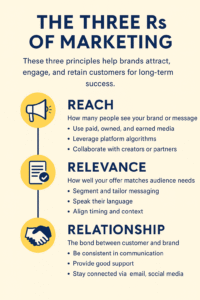
1) Reach
Definition: the number of people exposed to your brand or message. Without Reach, there is no pipeline.
How to increase Reach
- Orchestrate paid, owned and earned: search & shopping (see SEO vs SEA), social & video (social media marketing), PR and partnerships.
- Exploit platform mechanics: hooks in the first 3 seconds, native formats, consistent posting cadence.
- Improve search capture: coverage with the right match types in search ads (match type guide).
Key metrics: impressions, unique reach, view-through rate, new users, assisted conversions.
2) Relevance
Definition: fit between message/offer and audience needs, context and intent.
How to improve Relevance
- Segment by need and intent; tailor value propositions and creatives accordingly (see buyer persona guide and STP model).
- Use proven persuasion principles (Cialdini) and audience language.
- Align timing & context (device, channel, funnel stage).
Key metrics: CTR, engagement rate, bounce rate, conversion rate, cost per conversion.
3) Relationship
Definition: the strength of emotional and functional connection with your brand—driving retention, referrals and CLV.
How to build Relationships
- Deliver consistent quality, tone and value across touchpoints.
- Invest in lifecycle messaging (onboarding, activation, win-back) via email—start with welcome flows and re-engagement campaigns.
- Close the loop: proactive support, feedback collection and community building.
Key metrics: retention rate, repeat purchase rate, average order value, NPS, CLV.
Why the Three R’s Matter
- Reach fills the top of the funnel with the right audience.
- Relevance converts attention into action efficiently.
- Relationship compounds returns via retention and advocacy.
Missing one R hurts performance: high Reach without Relevance wastes spend; Relevance without Relationship yields one-off buyers; Relationship without Reach stalls growth.
Common Pitfalls
- Reach-only focus: chasing virality without conversion mechanics.
- Weak audience insight: poor research and segmentation.
- Post-purchase neglect: no onboarding, no loyalty loops.
- Inconsistent branding: mixed messages erode trust.
How to Measure Success
Track each R with a compact scorecard and one “golden ratio” for unit economics.
- Reach: unique reach, incremental lift, assisted conversions.
- Relevance: CTR, CVR, landing-page engagement, contribution margin.
- Relationship: retention %, churn %, repeat purchase rate, CLV, NPS.
Formulas
- CLV (Customer Lifetime Value):
Average Order Value × Purchase Frequency × Average Customer Lifespan - CAC (Customer Acquisition Cost):
Total Sales & Marketing Cost ÷ Number of New Customers (same period) - LTV:CAC Ratio:
CLV ÷ CAC— rule of thumb: ~3:1 is healthy; <1:1 means you’re losing money per customer. - Churn % (monthly):
Lost Customers ÷ Customers at Start of Month(Retention % ≈1 − Churn)
Key Acronyms Explained
- CTR
- Click-Through Rate — clicks ÷ impressions. Indicates message relevance to the audience.
- CVR
- Conversion Rate — conversions ÷ sessions or clicks. Measures how well traffic turns into outcomes.
- CAC
- Customer Acquisition Cost — total cost to acquire one new customer (ads, tools, people, fees) over a period.
- CLV / LTV
- Customer Lifetime Value — projected net value of a customer over their relationship with your brand.
- AOV
- Average Order Value — average revenue per order; useful for improving CLV via bundling/upsell.
- NPS
- Net Promoter Score — loyalty proxy based on customers’ willingness to recommend your brand.
- Churn
- Percentage of customers who stop buying or cancel in a given period.
- Retention
- Percentage of customers who remain active over time (often tracked in cohorts).
- ROAS
- Return on Ad Spend — revenue ÷ ad spend; see Target ROAS bidding for strategy implications.
Real-World Examples
Alphalete (Athleisure & Fitness)
- Reach: creator collaborations and YouTube fitness ecosystems.
- Relevance: timed product drops to seasonal goals.
- Relationship: community events and founder-led storytelling.
Target (Retail)
- Reach: national media, app and in-store real estate.
- Relevance: personalized offers and dynamic recommendations.
- Relationship: trusted brand through convenience and policies.
Buc-ee’s (Travel Centers)
- Reach: roadside buzz and distinctive signage.
- Relevance: traveler-first assortment (clean facilities, unique snacks).
- Relationship: consistent, playful brand experience.
Coca-Cola (Beverages)
- Reach: global ads and sponsorships.
- Relevance: localized campaigns, personalized packaging.
- Relationship: emotional branding across generations.
Taco John’s (QSR)
- Reach: regional campaigns and social tentpoles.
- Relevance: signature items and app-based offers.
- Relationship: nostalgia and a consistent brand voice.
Related Reading
- Buyer Persona Guide
- Deep Dive: STP Model
- What Is Neuromarketing?
- Net Promoter Score (NPS) Guide
- Target ROAS in Google Ads
Conclusion
The Three R’s aren’t theoretical. Treat them as operating constraints: acquire efficiently (Reach), convert with empathy and context (Relevance), and retain by delivering value repeatedly (Relationship). When aligned, they lower CAC, raise CLV and create durable growth.
FAQ: Reach, Relevance & Relationship
What are the Three R’s of Marketing?
A framework for full-funnel growth: Reach (find the right audience), Relevance (fit message to need and intent), and Relationship (retain and grow lifetime value).
How do the Three R’s map to the funnel?
Reach → awareness; Relevance → consideration & conversion; Relationship → retention & advocacy.
What if budget is limited—what should I prioritize?
Secure a minimum effective level of Reach, then maximize Relevance on highest-intent traffic, and build lightweight Relationship loops (welcome flow, reorder reminders).
How do I measure Relationship quality?
Retention %, churn %, repeat purchase rate, CLV and NPS. Track cohort curves, not just totals.
Is this different from the 4Ps?
Yes. The Three R’s focus on audience dynamics and lifecycle outcomes; the 4Ps focus on go-to-market levers (Product, Price, Place, Promotion). They’re complementary.
